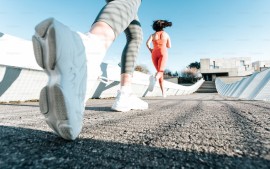Δωρεάν αποστολή για παραγγελίες άνω των 39€ με Box Now
Ελάχιστο ποσό παραγγελίας με 'Αποστολή με Courier' 9.90€
Δωρεάν αποστολή για παραγγελίες άνω των 39€ με Box Now
Ελάχιστο ποσό παραγγελίας με 'Αποστολή με Courier' 9.90€






Do you deal with knee and hip pain? It may be time to up your exercise game! Exercise is more than just a good health habit; it’s also an effective treatment for many knee and hip problems.
Strong muscles around a damaged knee or hip can help support a joint by taking over some of its responsibilities. For example, your hips will have an easier time supporting your body weight if your quadriceps, gluteals, hamstrings, and abdominal muscles are strong.
Strong quadriceps and hamstrings can take over much of the shock-absorbing role usually played by the meniscus or cartilage in the knee. The proper balance of strength in the muscles can hold the joint in the most functional and least painful position. With any knee or hip problem, the first muscles to lose strength are the largest antigravity muscles—the quadriceps and gluteals—so an exercise plan for any injury is likely to focus on these.
Muscles work in pairs: one contracts while the opposing one relaxes. For example, when you straighten your knee, your quadriceps on the front of your thigh contracts, and the hamstrings on the back relax. Imbalances in the function of paired muscles can cause joint problems and invite injury.
If your hamstrings are tight, your quadriceps can’t contract fully and may weaken, so exercise the quadriceps and hamstrings (the opposing muscles) equally. Flexibility exercises (to stretch and relax specific muscles) are an important part of an exercise plan to improve joint function.
If you have knee or hip problems choose your exercise carefully. Running or fast walking on hard sidewalks or pavement is tough on joints. If you love these activities, try doing them on a track or treadmill and wear well-cushioned shoes to lessen the impact. Better still, consider swimming or cycling, which are easier on your joints.
Exercise in the water has special benefits:
- The water supports your weight, reducing stress on your joints.
- You can try out exercises in a supported environment before doing them on solid ground.
- An 28° C pool is comfortable for exercise and soothes joints.
- You can increase range of motion and endurance without strenuous effort or joint pain.
Be sure to do leg resistance exercises two to three times per week to strengthen supportive muscles around the knees. Strengthening muscles through these activities will dampen stresses that travel through the knee.
Source: Harvard Medical School
